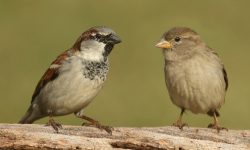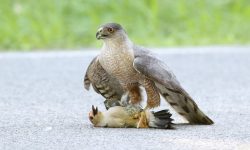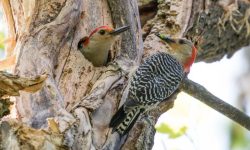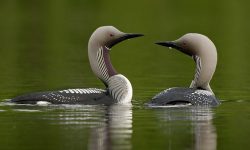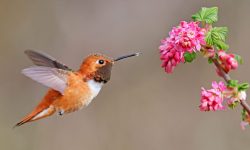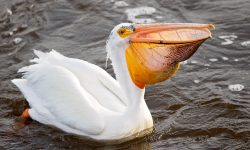Birds have fascinated humans for centuries with their colors, songs, and flight. But one question that often piques curiosity is: what do birds eat? While seeds and worms may come to mind first, birds actually enjoy a much wider and more surprising range of foods. Whether you’re a backyard birder or simply curious, this guide uncovers 15 unexpected foods that birds love—and you might already have them at home!
Understanding Bird Diets
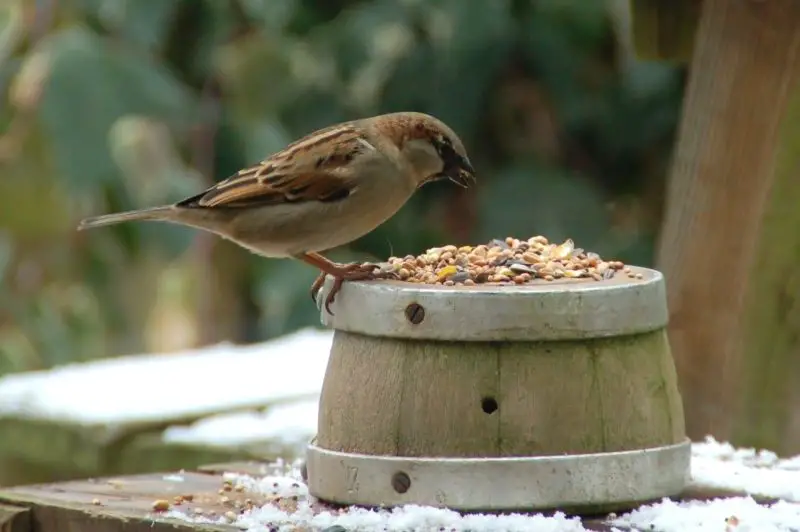
Birds have diverse diets that differ significantly depending on their species, natural habitat, and the time of year. Some birds are specialized feeders, such as insectivores that exclusively eat insects, while others may prefer fruits, seeds, or nectar. Omnivorous birds, on the other hand, have a more flexible diet, eating a mix of plant-based foods and small animals. Recognizing the specific dietary needs of various bird species can help you provide suitable food sources, benefiting both the birds and your local ecosystem. By understanding what different birds eat, you can also create a welcoming environment that attracts a broader variety of bird species to your garden.
Why Diet Diversity Matters
A healthy and varied diet is essential for birds to thrive. It provides the necessary nutrients, including fats, proteins, vitamins, and minerals, which are crucial for their overall health and energy levels. These nutrients help birds maintain their body functions and endurance, especially during critical times like migration or breeding seasons. For instance, during long migratory flights, birds require high-energy foods to fuel their journey. Similarly, in the colder months, when food is scarce, a well-balanced diet ensures that birds can survive winter conditions. Offering a range of food options helps meet their diverse nutritional needs, ensuring that birds can carry out their natural behaviors and lifecycle events.
15 Common Foods You Didn’t Know Birds Love
Let’s dive into these lesser-known but bird-approved foods, with tips on how to safely offer them in your backyard.
1. Cooked Rice
Birds can safely enjoy rice, and many species actually find it quite appealing! There is a common myth that uncooked rice can expand in birds’ stomachs and cause harm, but cooked rice is perfectly safe for them. In fact, it provides a good source of carbohydrates, which is essential for birds, particularly those that are migratory. It helps give them the energy they need for long journeys, making it an excellent food option during migration seasons.
How to Serve:
When serving rice to birds, ensure that it is fully cooked and cooled before offering it to them. Both white and brown rice are suitable, but avoid adding salt, spices, or sauces, as these can be harmful to birds. To feed them, you can scatter the rice on a platform feeder or simply place it on the ground, allowing the birds to forage for it naturally.
2. Oatmeal
Oatmeal is a nutritious treat that many birds find appealing, particularly during the colder months when food is harder to come by. Packed with fiber and essential nutrients, oatmeal serves as a fantastic energy booster for birds. It helps them stay active and healthy, especially when they need extra fuel during the winter season.
How to Serve:
When offering oatmeal to birds, use plain rolled or steel-cut oats without any added sugar or flavorings. It’s important not to serve the oatmeal cooked or sticky, as it can harden and become difficult for birds to eat, potentially causing harm. Instead, offer dry oats by mixing them with birdseed or suet to create a diverse and enticing food source for the birds in your yard.
3. Cheese
While it may seem unusual, many birds enjoy cheese in moderation. Soft, mild cheeses such as cheddar or mozzarella can offer birds a good source of protein and fat, both of which are important for their overall health and energy levels. Cheese is especially beneficial for providing extra calories during the winter months when food is more scarce.
How to Serve:
To serve cheese to birds, grate or crumble it into small, manageable bits to make it easier for them to eat. It’s essential to avoid moldy or spicy cheeses, as these can be harmful to birds. Cheese should be offered occasionally as a treat, rather than a regular part of their diet, to prevent any potential digestive issues.
4. Bananas
Bananas are a favorite among many frugivorous birds, including species like orioles and tanagers, who enjoy soft, sweet fruits. Rich in potassium and other essential nutrients, bananas provide an excellent energy boost for birds. The natural sweetness of bananas also makes them highly appealing, particularly to birds that rely on fruit as a primary food source.
How to Serve:
To serve bananas to birds, simply peel and slice ripe bananas into manageable pieces. You can place the banana slices on a platform feeder or in fruit cups, which allows birds to easily access the fruit. For added variety, consider combining bananas with other fruits, creating an attractive and nutritious mix that will draw more birds to your yard.
5. Apples
Apples are a nutritious fruit that provides birds with essential vitamins, fiber, and hydration. Birds such as cardinals, mockingbirds, and waxwings are particularly fond of apples, making them a great addition to your bird-friendly offerings. The natural sugars and water content help keep birds energized and hydrated, especially in the warmer months.
How to Serve:
Before serving apples to birds, be sure to remove the seeds, as they contain trace amounts of toxins that can be harmful to birds. Once the seeds are removed, cut the apples into chunks or thin slices to make them easier for the birds to eat. To make it more accessible, you can secure the apple pieces on a nail or skewer, allowing birds to peck at the fruit while keeping it stable and off the ground.
6. Peanut Butter
Peanut butter is a high-protein, high-fat food that provides birds with much-needed energy, especially during the colder months when they require extra calories to stay warm. Its sticky consistency makes it ideal for spreading on feeders, tree bark, or even pinecones, where birds can easily peck at it.
How to Serve:
When offering peanut butter to birds, be sure to use unsalted and unsweetened varieties, as salt and sugar can be harmful to them. Spread the peanut butter on tree bark, bird feeders, or mix it with birdseed for an enticing treat. Avoid peanut butter that contains xylitol or any added sugars, as these ingredients are toxic to birds. This treat can be offered sparingly to provide extra nutrition during winter or other times of high energy demand.
7. Pasta
Leftover plain pasta can be a surprisingly satisfying treat for birds. Its texture mimics that of worms, making it an attractive option for species that typically eat insects. Additionally, pasta provides carbohydrates, which are a great source of energy, especially for birds during migration or winter when they need extra fuel.
How to Serve:
When serving pasta to birds, ensure it is plain and fully cooked, with no sauce or salt added. Cut the pasta into small, manageable pieces to make it easier for birds to eat. You can mix the pasta with birdseed to create a bulkier feed that attracts more birds and helps diversify their diet.
8. Grapes
Grapes are a popular treat for a wide range of bird species due to their natural sugars, which provide birds with a quick energy boost. Their soft texture and small size make them especially appealing to frugivorous birds like robins and finches, who enjoy fruit as a primary food source.
How to Serve:
For smaller birds, cut the grapes in half to make them easier to eat, while larger birds can enjoy them whole. Be sure to wash the grapes thoroughly to remove any pesticides or chemicals. It’s important to serve grapes fresh, as fermented grapes can be harmful to birds. Offering them fresh ensures the birds get the full nutritional benefit.
9. Crushed Eggs and Shells
Crushed eggs and their shells provide a nutritious combination, offering both calcium and protein. This is particularly beneficial for birds during the nesting season, as calcium supports strong egg production and healthy bones, while the protein in eggs helps with overall energy and growth.
How to Serve:
To serve crushed eggshells, first boil the eggs to sanitize the shells, then crush them into small pieces. You can also offer scrambled eggs, ensuring they are plain without oil, butter, or salt. Both the crushed eggshells and scrambled eggs can be placed in a shallow dish or mixed with birdseed, providing birds with a nutritious treat that supports their nesting needs.
10. Pumpkin and Melon Seeds
Pumpkin and melon seeds are a nutritious treat for birds, packed with healthy fats and protein. After carving a pumpkin or cutting a melon, you can recycle the seeds and offer them to local wildlife, making them a great way to minimize waste while supporting bird health.
How to Serve:
First, rinse and dry the seeds to remove any pulp or residue. You can offer them raw or lightly toast them (without adding salt) to make them more appealing. Serve the seeds on a flat tray or scatter them on the ground, allowing birds to forage and enjoy this healthy, energy-boosting snack.
11. Dog or Cat Food (Moistened)
Pet food, particularly kibble, can be a surprising but valuable source of nutrition for birds like crows, jays, and even robins. It is rich in protein and fat, which are essential for birds, especially during times when other food sources are limited. While pet food should not be a regular part of a bird’s diet, it can serve as a backup option when other food is scarce.
How to Serve:
To serve pet kibble to birds, moisten the dry kibble with water until it becomes soft and easier for the birds to eat. Offer the food in small amounts to prevent it from spoiling quickly. It’s important to only use pet food brands that do not contain artificial dyes, excess salt, or any additives that could harm the birds. This ensures the food remains safe and nutritious for their consumption.
12. Cornbread and Muffins
Cornbread and muffins can be a tasty treat for many backyard birds, especially if they are made without added sugar, salt, or spices. Birds like sparrows, chickadees, and bluebirds enjoy these baked goods, as they provide a good source of carbohydrates, which is especially useful during colder months when they need extra energy.
How to Serve:
To serve cornbread or muffins to birds, crumble them into small, dry pieces that are easy for birds to peck at. Avoid offering sweet muffins or any that contain chocolate, as these ingredients can be harmful to birds. For added variety and nutrition, you can mix the crumbled baked goods with seeds, creating a more enticing and diverse food option for the birds.
13. Chopped Nuts
Many bird species, including woodpeckers, titmice, and nuthatches, are drawn to nuts due to their high protein content and ability to provide long-lasting energy. Nuts are an excellent food source, especially in the colder months when birds need extra nutrition to stay active and healthy.
How to Serve:
Use unsalted almonds, pecans, peanuts, or walnuts, ensuring that the nuts are free of any added oils, salt, or flavorings. Chop the nuts finely or crush them into smaller pieces to make them easier for birds to eat. You can serve them in suet, on feeders, or mix them with seeds to create a nutrient-packed treat that will keep birds coming back for more.
14. Berries (Fresh or Frozen)
Berries are a favorite among many bird species, including mockingbirds, bluebirds, and waxwings. These small, flavorful fruits are packed with vitamins and antioxidants, providing birds with a natural energy boost, especially during migration or breeding seasons.
How to Serve:
You can offer fresh berries or thawed frozen berries to birds. Place them in fruit feeders or shallow dishes, making them easy for birds to access and enjoy. Offering a variety of berries like blueberries, raspberries, and cranberries will attract a wide range of birds to your yard, enhancing the diversity of visitors.
15. Leafy Greens
Just like humans, birds can benefit from the nutrients found in leafy greens. Greens such as kale, spinach, and romaine lettuce are particularly favored by parrots, doves, and other species. These greens are packed with vitamins, minerals, and fiber, which support a bird’s overall health and well-being.
How to Serve:
Offer fresh, chopped greens to birds, making them easier to eat and more digestible. You can hang leafy bundles or lay the greens on a platform feeder to give birds easy access. Always rinse the greens thoroughly before serving to remove any pesticides or contaminants. Offering these nutritious greens will provide variety in their diet and encourage healthier feeding habits.
Foods Birds Should Never Eat
While many human foods can be beneficial to birds, there are certain items that should always be avoided, as they can be toxic or harmful to their health. It’s important to be aware of these foods to ensure the safety and well-being of birds visiting your yard.
Toxic or Dangerous Foods:
-
Avocado: Contains persin, a substance that is toxic to birds and can cause heart failure, respiratory issues, and even death.
-
Chocolate: Contains theobromine, which is toxic to birds and can lead to vomiting, diarrhea, seizures, and in severe cases, death.
-
Caffeine: Found in coffee, tea, and some sodas, caffeine can cause restlessness, rapid heart rate, and potentially fatal reactions in birds.
-
Alcohol: Even in small amounts, alcohol can be extremely harmful to birds, leading to lethargy, impaired coordination, and even death.
-
Salted or Sugary Snacks: High levels of salt and sugar can lead to dehydration, kidney damage, and other serious health issues in birds.
-
Bread: While not toxic, bread offers little nutritional value and can cause digestive problems, such as bloating and discomfort, especially if eaten in large amounts.
Feeding Birds Responsibly
Feeding birds is a rewarding way to support local wildlife, but it’s essential to do so in a responsible and ethical manner to ensure their health and safety. By following a few simple guidelines, you can help create a safe, sustainable environment for birds while enjoying their presence.
Best Practices for Backyard Feeding:
-
Keep Feeders Clean: Regularly clean your bird feeders to prevent the spread of disease. Old, moldy food can harbor harmful bacteria or fungi that may make birds sick. Clean the feeders with mild soap and warm water, and disinfect them periodically.
-
Provide Fresh Water Nearby: Birds need access to fresh water for drinking and bathing. Make sure there is a clean water source close to your feeders to help them stay hydrated and healthy. Change the water frequently to prevent contamination.
-
Offer Food in Moderation: While it’s tempting to offer large quantities of food, it’s important to feed birds in moderation to avoid fostering dependency. Overfeeding can disrupt their natural foraging behaviors and create an imbalance in their diet. Offering a variety of food sources will encourage them to maintain their natural feeding habits.
-
Use Native Plants to Supplement Natural Diets: Instead of relying solely on feeders, consider planting native plants and shrubs that provide natural food sources, such as berries, seeds, and nectar. This not only supports local birds but also helps preserve native ecosystems. Native plants attract a wide range of bird species and provide them with a diverse, year-round food supply.
How to Attract Birds with the Right Food
Creating a bird-friendly backyard goes beyond just offering the right food; it’s about providing a welcoming environment that meets their needs. By combining food with the right habitat features, you can attract a diverse range of birds to your yard, encouraging them to stay and thrive.
Tips for a Bird-Friendly Yard:
-
Install a Variety of Feeders: Offer a selection of feeders to cater to different bird species. Tube feeders are great for small birds like finches and chickadees, while platform feeders can attract larger species like cardinals and jays. Suet feeders provide energy-rich treats for woodpeckers, nuthatches, and other insectivorous birds.
-
Plant Fruit-Bearing Trees and Native Shrubs: Native plants are a natural food source for birds, offering berries, seeds, and insects. Trees like crabapple, dogwood, and serviceberry provide essential nutrition for various bird species. Shrubs like elderberry and holly are perfect for attracting fruit-eating birds.
-
Use a Birdbath with Fresh, Clean Water: Birds need water not only for drinking but also for bathing, which helps them maintain their feathers. A clean birdbath with fresh water will attract birds, especially during the warmer months. Be sure to clean and refill the birdbath regularly to prevent contamination.
-
Avoid Pesticides in Your Garden: Pesticides can harm both birds and the insects they rely on for food. By avoiding pesticides, you create a healthier, safer environment for birds. Instead, consider natural pest control methods, such as attracting beneficial insects, which will provide a sustainable food source for your backyard birds.
Final Thoughts
So, what do birds eat? A lot more than you might think! From fruits and nuts to leftover rice and peanut butter, birds enjoy a diverse menu that goes far beyond seeds and worms. Offering these unexpected yet safe treats can make your backyard a vibrant, bird-filled sanctuary.
Whether you’re a beginner birder or a seasoned nature lover, experimenting with different foods can help you learn more about your feathered visitors—and keep them coming back for more.
Now that you know what birds love to eat, which of these surprising treats will you try offering first? Your backyard birds just might thank you with a song.

